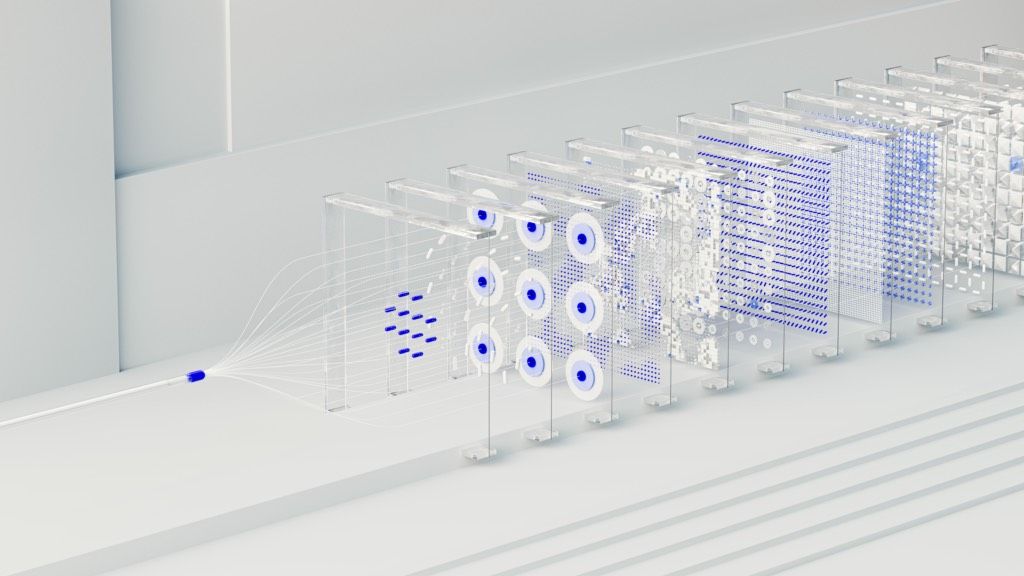CBR vs VBR: A Comprehensive Comparison for Better Streaming Quality
Background Knowledge
To understand CBR (Constant Bit Rate) and VBR (Variable Bit Rate), it is necessary to first understand the following background knowledge:
- Digital Video Encoding: Digital video encoding is the process of converting analog video signals into digital form for storage, processing, and transmission on computers and networks. The main video encoding standards include H.264/AVC, H.265/HEVC, VP9, AV1, etc.
- Bitrate: Bitrate refers to the transmission rate of video data per unit of time, usually in bps (bits per second). The bitrate determines the size and quality of the video file. A higher bitrate can provide higher video quality, but it will also result in a larger video file.
- Frame Type: Digital videos are usually composed of a series of frames (images). Depending on the encoding method, frames can be divided into I-frames (keyframes), P-frames (forward predictive frames), and B-frames (bidirectional predictive frames). I-frames contain complete image information, while P-frames and B-frames contain difference information between adjacent frames. The choice of frame type during the video encoding process will affect the compression effect and quality of the video.
- Encoder and Decoder: The encoder is responsible for compressing and encoding the original video data to generate a digital video file; the decoder is responsible for decompressing and decoding the digital video file, restoring it to the original video data. The performance, efficiency, and compatibility of encoders and decoders have a significant impact on video quality and playback experience. Understanding this background knowledge will help you better understand the concepts and application scenarios of CBR and VBR in the following discussion.

What is CBR
CBR (Constant Bit Rate) is a method of controlling the bitrate during video encoding. In CBR mode, the bitrate during the video encoding process remains constant and does not adjust according to the complexity of the video content. This means that whether the video content is simple or complex, the same bitrate will be used for encoding.
The history of CBR can be traced back to the early stages of digital video encoding technology. In the 1980s and 1990s, with the emergence and development of digital video technology, bitrate control in the video encoding and decoding process became an important research field.
In the initial digital video encoding technology, CBR was a relatively simple and easy-to-implement bitrate control method. The core idea of CBR is to maintain a constant bitrate throughout the video encoding process, regardless of the complexity of the video content. This method can ensure the stability of video quality while simplifying the design of encoders and decoders.
CBR was widely used in the early digital video encoding technology, such as the MPEG-1 and MPEG-2 encoding standards. At that time, network bandwidth and storage space were relatively limited, so maintaining a constant bitrate helped simplify the transmission and storage of video streams.
However, with the gradual increase in network bandwidth and storage space, as well as the further development of video encoding technology, people began to pay attention to how to reduce the size of video files while ensuring video quality. Therefore, VBR (Variable Bit Rate), a method of dynamically adjusting the bitrate according to video content, was born. VBR to some extent solved the problem of oversized video files that CBR might lead to, but at the same time, it also brought the risk of video quality fluctuations.
In summary, as an early digital video encoding technology, CBR simplifies the design of encoders and decoders while ensuring the stability of video quality. With the development of technology, CBR still plays an important role in specific scenarios, but at the same time, more bitrate control methods for different needs, such as VBR, have also appeared.
Implementation Principle of CBR
The implementation principle of CBR (Constant Bit Rate) mainly involves the following aspects:
- Determine the target bitrate: In the CBR encoding process, the first step is to determine a target bitrate. This target bitrate is usually specified by the user in the encoding settings and is selected based on actual needs, network bandwidth, and storage space, among other factors.
- Bitrate control: To achieve a constant bitrate, the CBR encoder needs to control the bitrate throughout the entire encoding process. This is usually achieved by adjusting the quantization parameters. The quantization parameters determine the precision of video encoding. Lower quantization parameters will lead to higher encoding quality and higher bitrate, and vice versa. The encoder dynamically adjusts the quantization parameters according to the target bitrate and actual encoding results to maintain a constant bitrate.
- Constant quality factor: In the CBR encoding process, the encoder can use a constant quality factor. The quality factor is a parameter used to control encoding quality. A lower quality factor will lead to higher encoding quality, and vice versa. In CBR mode, the encoder uses a constant quality factor to achieve a constant bitrate.
- Encoding optimization: The CBR encoder, based on the target bitrate and the constant quality factor, optimizes the encoding of video frames. This includes selecting the appropriate frame types (I-frames, P-frames, B-frames), prediction modes, quantization parameters, etc., to achieve the best encoding effect.
- Buffer management: To maintain a constant bitrate, the CBR encoder usually uses a buffer to store the already encoded video data. The encoder adjusts the quantization parameters according to the state of the buffer to ensure a constant bitrate. For example, when the buffer data is excessive, the encoder will increase the quantization parameters to reduce the bitrate; when the buffer data is insufficient, the encoder will decrease the quantization parameters to increase the bitrate.
In summary, the implementation principle of CBR mainly includes determining the target bitrate, controlling the bitrate, maintaining a constant quality factor, optimizing encoding, and managing the buffer. Through these methods, the CBR encoder can maintain a constant bitrate throughout the entire encoding process, thereby ensuring stable video quality.
What is VBR
VBR (Variable Bit Rate) is a method of controlling the bitrate during video encoding. In VBR mode, the bitrate during the video encoding process dynamically adjusts according to the complexity of the video content. When the video content is simpler, the encoder uses a lower bitrate; when the video content is more complex, the encoder uses a higher bitrate.
In summary, VBR is an encoding method that dynamically adjusts the bitrate based on video content, effectively saving bandwidth and storage resources while ensuring video quality. When choosing between using VBR or CBR (Constant Bit Rate), it is necessary to consider factors such as actual needs, network bandwidth, encoder performance, and video content.
Implementation Principle of VBR
The implementation principle of VBR (Variable Bit Rate) mainly involves the following aspects:
- Video Content Analysis: The VBR encoder first needs to analyze the input video content to identify the differences between video frames and the complexity of the video content. This usually includes analysis of video frame motion estimation, texture complexity, scene changes, etc.
- Bitrate Allocation: Based on the results of the video content analysis, the VBR encoder allocates an appropriate bitrate for each video frame. For frames with complex content or large motion, the encoder allocates a higher bitrate to ensure video quality. For frames with simple content or small motion, the encoder allocates a lower bitrate to save bandwidth and storage resources.
- Quality Control: The VBR encoder needs to maintain a relatively constant video quality throughout the entire encoding process. To achieve this goal, the encoder usually uses a parameter called a "quality factor" to control encoding quality. The lower the quality factor, the higher the encoding quality, but the higher the bitrate as well. The encoder dynamically adjusts the quality factor according to the actual situation to achieve constant video quality.
- Bitrate Control: During the VBR encoding process, the encoder also needs to adjust the bitrate according to actual network conditions, device performance, and other factors. For example, when network bandwidth is limited, the encoder may need to reduce the bitrate to ensure smooth video playback. To achieve this goal, the encoder can use some advanced bitrate control algorithms, such as Leaky Bucket, PID controller, etc.
- Encoding Optimization: The VBR encoder, based on the results of bitrate allocation and quality control, optimizes the encoding of video frames. This includes selecting the appropriate frame types (I-frames, P-frames, B-frames), prediction modes, quantization parameters, etc., to achieve the best encoding effect.
In summary, the implementation principle of VBR mainly includes video content analysis, bitrate allocation, quality control, bitrate control, and encoding optimization. Through these methods, the VBR encoder can effectively save bandwidth and storage resources while ensuring video quality.
Advantages and Disadvantages of CBR and VBR
Advantages and disadvantages of CBR (Constant Bit Rate):
Advantages:
Stable video quality: Since the bitrate is constant, the video quality does not fluctuate due to the complexity of the content, making it suitable for scenarios with high requirements for video quality stability, such as live sports events and concerts. Simplified encoding and decoding: The CBR method simplifies the design of encoders and decoders, requiring relatively low encoder performance.
Disadvantages:
May result in oversized video files: For videos with simple content, the CBR method may cause unnecessary bandwidth waste and storage space occupancy, because even if the content is simple, a higher bitrate will be used for encoding.
Advantages and disadvantages of VBR (Variable Bit Rate):
Advantages:
Save bandwidth and storage resources: VBR dynamically adjusts the bitrate according to the complexity of the video content, effectively reducing the size of the video file while ensuring video quality, saving bandwidth and storage resources.
Disadvantages:
Possible video quality fluctuations: When the complexity of the video content changes, VBR may cause video quality fluctuations. Higher encoder performance requirements: VBR requires real-time bitrate adjustment, so it has higher performance requirements for encoders.
In summary, when choosing between using CBR or VBR, it is necessary to consider factors such as actual needs, network bandwidth, encoder performance, and video content.
Applicable Scenarios for CBR and VBR
CBR (Constant Bit Rate) and VBR (Variable Bit Rate) are bitrate control methods widely used in digital video encoding, with high versatility. They are suitable for different scenarios, as follows:
Applicable scenarios for CBR (Constant Bit Rate):
- Scenarios with high requirements for video quality stability: For example, live sports events, concerts, important meetings, etc. In these occasions, the stability of video quality is crucial, and CBR can ensure a constant bitrate, thereby ensuring that the video quality remains stable.
- Scenarios with high requirements for real-time performance: For example, real-time communication, video surveillance, etc. In these scenarios, real-time performance is crucial, and CBR, due to its relatively low requirements for encoder performance, can reduce encoding latency and improve real-time performance.
- Scenarios with stable network environments and sufficient bandwidth: In this case, using CBR can ensure stable video quality, without worrying about the problem of bandwidth waste.
Applicable scenarios for VBR (Variable Bit Rate):
- Scenarios where saving bandwidth and storage resources is desired: For example, online video platforms, video on-demand services, etc. In these scenarios, VBR can dynamically adjust the bitrate according to the complexity of the video content, thereby effectively reducing the size of the video file while ensuring video quality.
- Scenarios where the complexity of video content varies greatly: For example, movies, TV dramas, etc. In these videos, the content of the picture may constantly change from simple to complex. Using VBR can better adapt to this change, save resources while ensuring video quality.
- Scenarios with unstable network environments or limited bandwidth: In this case, using VBR can dynamically adjust the bitrate according to the actual network conditions to ensure smooth video playback and reduce the risk of buffering and stuttering.
In summary, CBR and VBR are each suitable for different scenarios, and the appropriate bitrate control method should be selected based on actual needs, network environment, encoder performance, and other factors.
Modern Encoder Support for CBR and VBR
Modern video encoders usually support both CBR (Constant Bit Rate) and VBR (Variable Bit Rate) bitrate control strategies. Here are some common encoders and their support for CBR and VBR:
- x264: x264 is a widely used open-source H.264/AVC video encoder. It supports both CBR and VBR modes, and users can achieve constant or variable bitrate encoding by adjusting parameters, such as setting the bitrate parameter to control the target bitrate and using qp and crf parameters to control the quality factor.
- x265: x265 is an open-source H.265/HEVC video encoder that also supports both CBR and VBR modes. Similar to x264, users can achieve constant or variable bitrate encoding by adjusting parameters.
- VP9: VP9 is an open-source video encoding standard developed by Google, supporting both CBR and VBR modes. The VP9 encoder can reduce file size by about 50% while maintaining similar video quality to H.264/AVC. Users can switch between CBR and VBR modes by adjusting encoder parameters.
- AV1: AV1 is an open-source video encoding standard developed by AOMedia (Alliance for Open Media), also supporting both CBR and VBR modes. AV1 aims to provide higher compression efficiency than H.265/HEVC to meet the needs of future high-definition video and virtual reality applications. Users can switch between CBR and VBR modes by adjusting encoder parameters.
These encoders typically provide a series of parameters for users to adjust when implementing CBR and VBR modes, such as target bitrate, maximum bitrate, minimum bitrate, quality factor, etc. Users can choose the appropriate bitrate control strategy and parameter settings based on actual needs and scenarios.
Future Development Trends of CBR and VBR
CBR (Constant Bit Rate) and VBR (Variable Bit Rate), as the two main bitrate control strategies in video encoding, will play an important role in the future video encoding and decoding technology. Here are some predictions for the future development of CBR and VBR:

- Smarter bitrate control: With the development of artificial intelligence and machine learning technology, future encoders may adjust the bitrate more intelligently. For example, encoders may decide in real-time whether to use CBR or VBR and how to adjust the bitrate based on factors such as video content features, network environment, and device performance, thereby achieving higher video quality and more efficient resource utilization.
- More efficient video encoding standards: With the emergence of new video encoding standards such as H.266/VVC, EVC, and AV2, future video encoding will be more efficient. These new encoding standards will support more flexible and efficient bitrate control strategies, including CBR and VBR.
- More application scenarios: With the development of new technologies such as 5G, VR/AR, and 8K, more application scenarios requiring video encoding will emerge in the future. In these new application scenarios, CBR and VBR will play their respective advantages according to specific needs and conditions.
- Better user experience: Whether it is CBR or VBR, the ultimate goal is to provide a better user experience. Future video encoding technology will pay more attention to user experience, such as dynamically adjusting the bitrate to reduce buffering and stuttering, improving video quality, and so on.
In summary, CBR and VBR, as the two main bitrate control strategies in video encoding, will play an important role in the future video encoding and decoding technology. They will continue to develop and optimize with the advancement of technology to meet the future diverse and high-quality video encoding needs.
